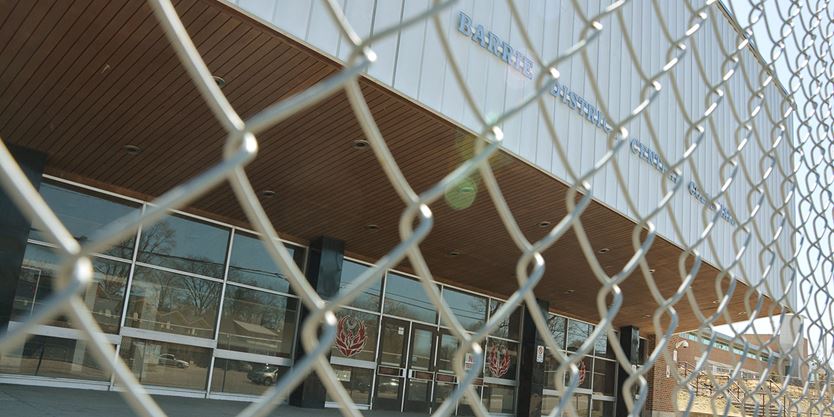W.A. Fisher auditorium has decades of sentimental value. But that may not be enough to save it from the wrecking ball.
At a general committee meeting Dec. 7, Barrie councillors put the brakes on plans to convert the W.A. Fisher auditorium into a large theatre and event centre. Instead, they passed a motion to suspend the project for at least a year, and have agreed to demolish the existing building. They’ve also asked staff to “reimagine” the proposal — possibly by separating the project into detached theatre and conference-centre sites.
The decisions need to be ratified at an upcoming meeting. But, under the plan, the project will be held up until market conditions improve as part of a potential COVID-19 pandemic recovery.

“It’s become clear from this report we’re putting a square peg in a round hole,” deputy mayor Barry Ward said. “Even if we were to renovate it, it would be unrecognizable. We’ve got to face facts: It’s not the Orillia Opera House, it’s not the most attractive building. I know it has special meaning for many generations of residents. But we can find a way to honour those memories in a new building. We owe it to future generations to build a facility that meets their needs.”
In June, city economic and creative development director Stephannie Schlichter said the given the implications of the pandemic.

The city has wanted for years to build a 650-seat theatre and event centre on the property, which was once connected to the now-demolished Barrie Central Collegiate building. However, the anticipated cost for reconstruction swelled from $25.6 million to more than $50 million, Schlichter said.
“The current vision for a state-of-the-art theatre and conference centre cannot be delivered within the current scope and capital budget,” she said.
A “theatre-only” option would cost $30 million to construct and about $750,000 per year to operate, the city says.
“At some point, the industry will recover and people will return to enjoying live performances and in-person conferences, but it is impossible to predict when the sector can expect to make a full recovery and if there will be any long standing implications,” Schlichter said.
Coun. Keenan Aylwin said the legacy of the building can be honoured through other methods than physical preservation.
“I went to Barrie Central; I was in the concert band and was a drama kid,” he said. “I lived in that auditorium for a large part of high school. (But) it wasn’t really about the building. It was about the people and the ability to gather and create art. To keep the building is a waste of money.”
Mayor Jeff Lehman agreed. “I would have laid down in front of the bulldozers four years ago,” he said. “You can’t make these decisions based on nostalgia or emotion. Is there enough value in the retention of the building to outweigh the cost of starting afresh? It’s fairly clear what the message is from our staff. It’s painful. We don’t have to like it (but) that’s the right decision.”
Downtown permanent market ‘precinct’ being planned
In a separate recommendation, the committee also granted approval for staff to develop a business case for a permanent market to be constructed at the site of the downtown bus terminal and start work on a precinct plan for the area. Staff intend to report back in the spring.
“Barrie’s downtown is evolving,” development services director Michelle Banfield said. “New mixed-use and residential projects are bringing new residents to the downtown, while planned and recently completed city-led investments are creating a network of vibrant and attractive public spaces.”
The precinct would run from the north side of Dunlop Street to south of Simcoe Street, between Bayfield and Bradford streets.
“This corner of the downtown has the potential to be the strongest part of our tourism economy and a major attraction,” Mayor Jeff Lehman said.
Banfield compared the initiative to St. Lawrence Market in Toronto and ByWard Market in Ottawa, “successful examples” of precincts that are built around a centrally-located, permanent market building.
“The study area is positioned as a hub for creative, cultural and community enterprises that can offer a vibrant sense of place and an area for collaboration as the city’s downtown continues to evolve through intensification,” she said.
This project would create a more complete community, encourage tourism and repurpose an underutilized city building, Banfield said.
